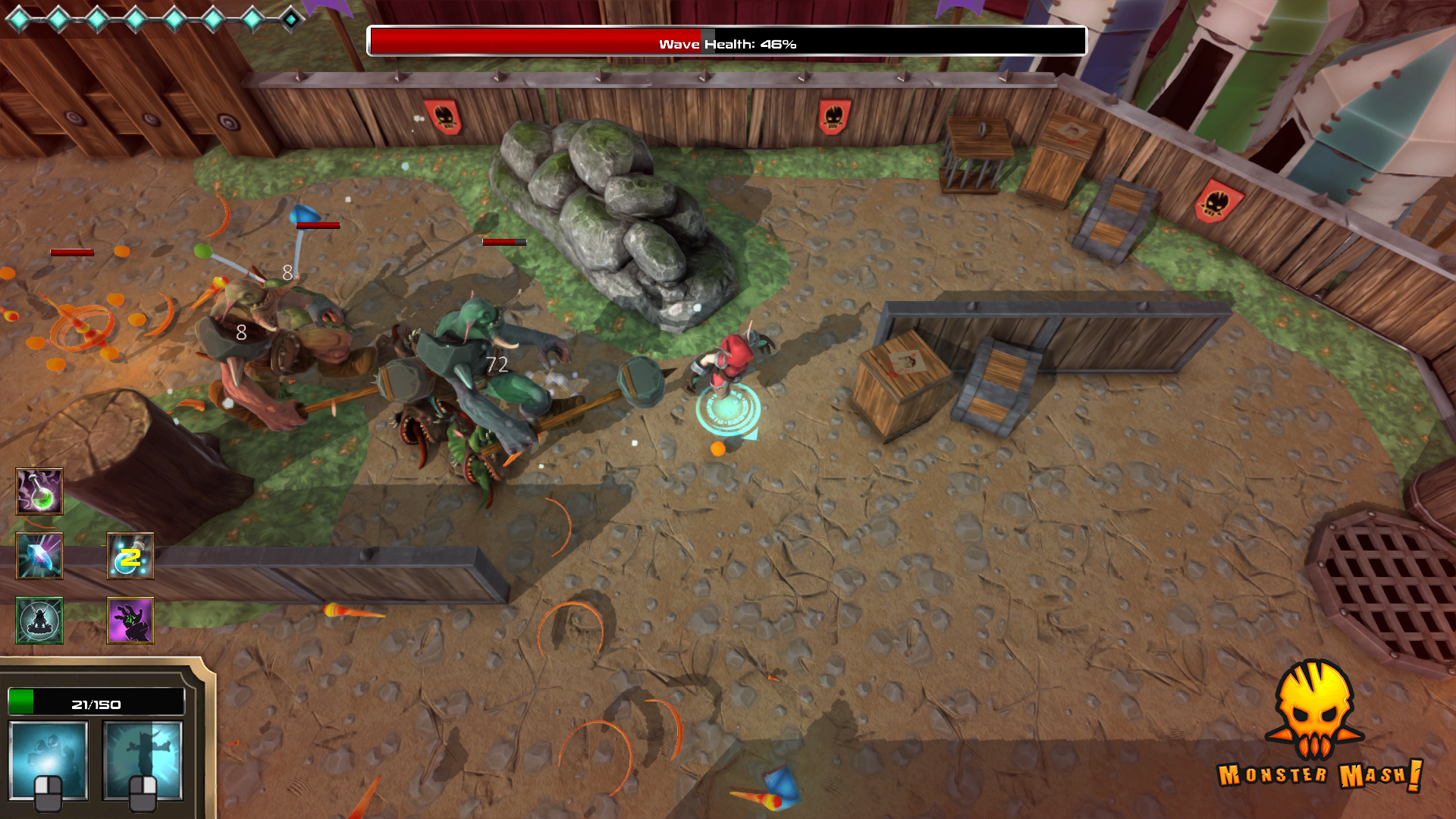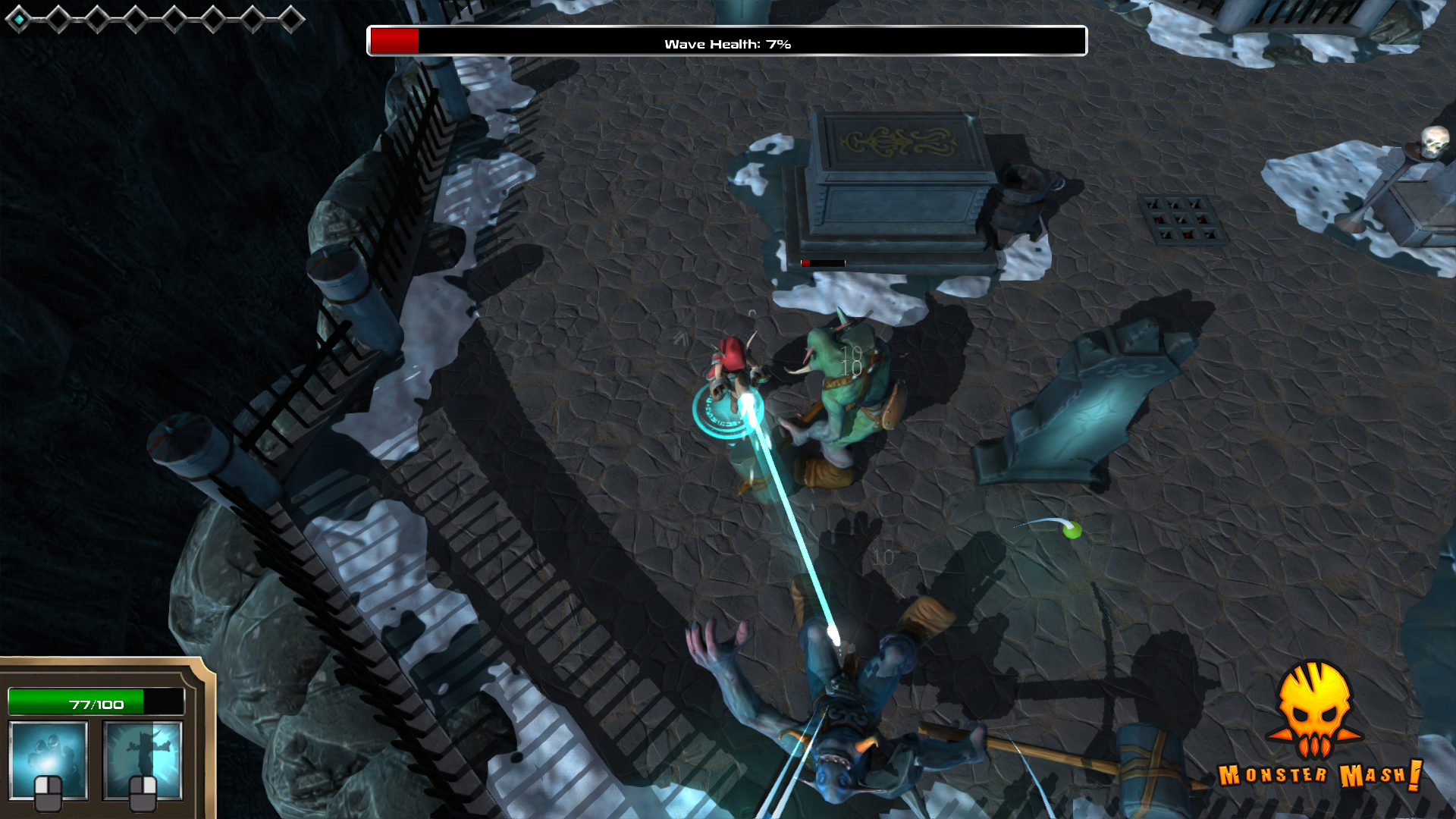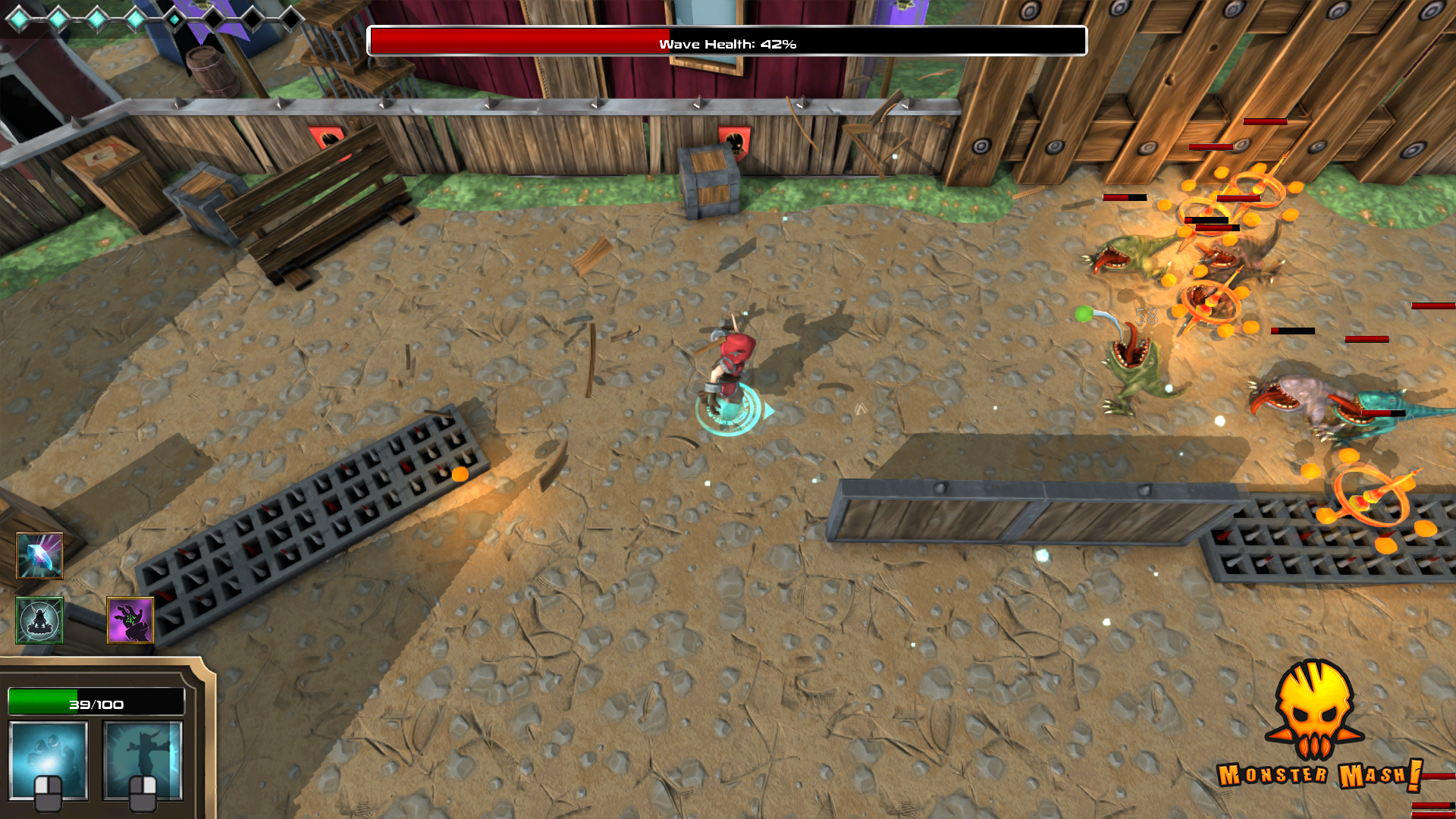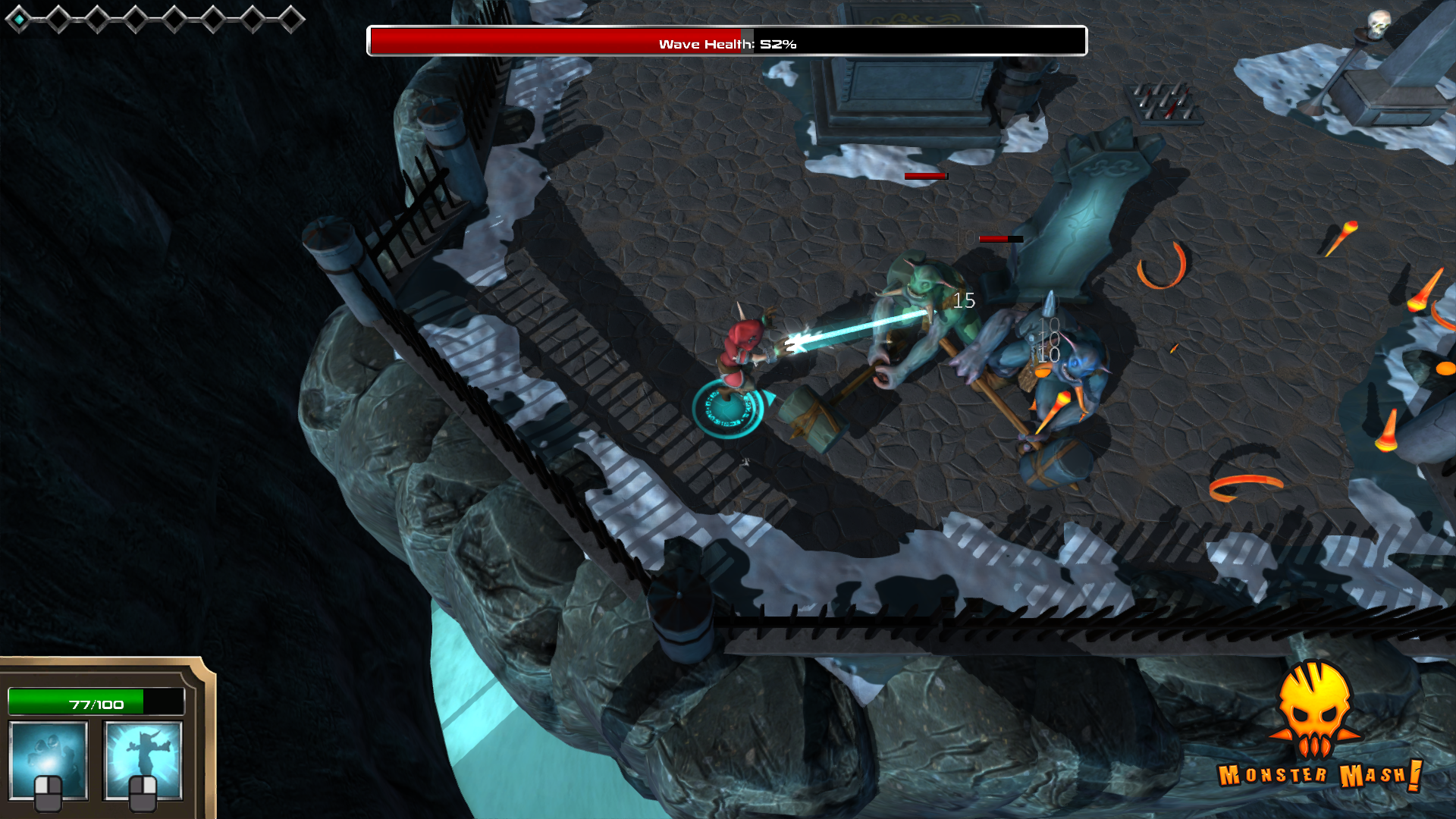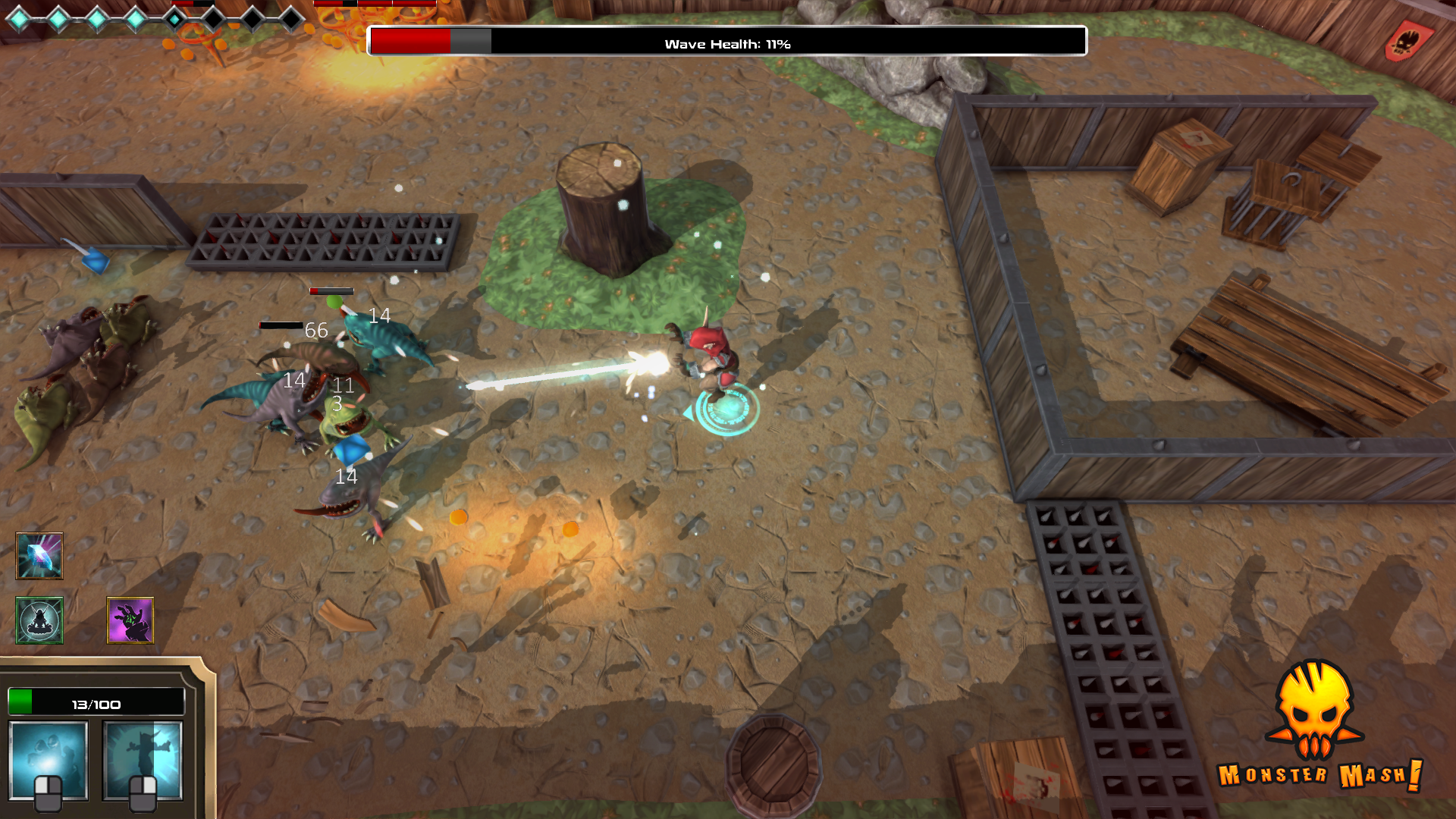Monster Mash!
Summary
Monster Mash is an action arena game where the player needs to fight their way through waves of enemies. The gameplay consists of the player spawning in an arena, and facing off one wave of enemies at a time. In between every wave, the layout of the arena changes and the player needs to maneuver around the space and adapt their playstyle to their surroundings.
Specifications
- Created in 10 weeks half-time
- Created using an in-house engine made by our programmers
- Levels edited using Unity
- Balancing done in JSON
My contributions
- Level design
- Game design
- Created Arena 1
- Pre-production
- Prototyping
- Finalizing 8 wave layouts
- Balancing
- Set dressing
- Balanced enemies
The Sandcastle Team
Level Designers:
- William
- Julia Holmlund
Artists:
- Anniken Arfvidsson
- Christer Degerman
- Robin Tran
Programmers:
- Andreas Lasses
- Erik Paldanius
- Marcus Holst
- Robin Jacobsen
- Simon Skogsrydh
- Tobias Erlandsson
- Ylva Werner
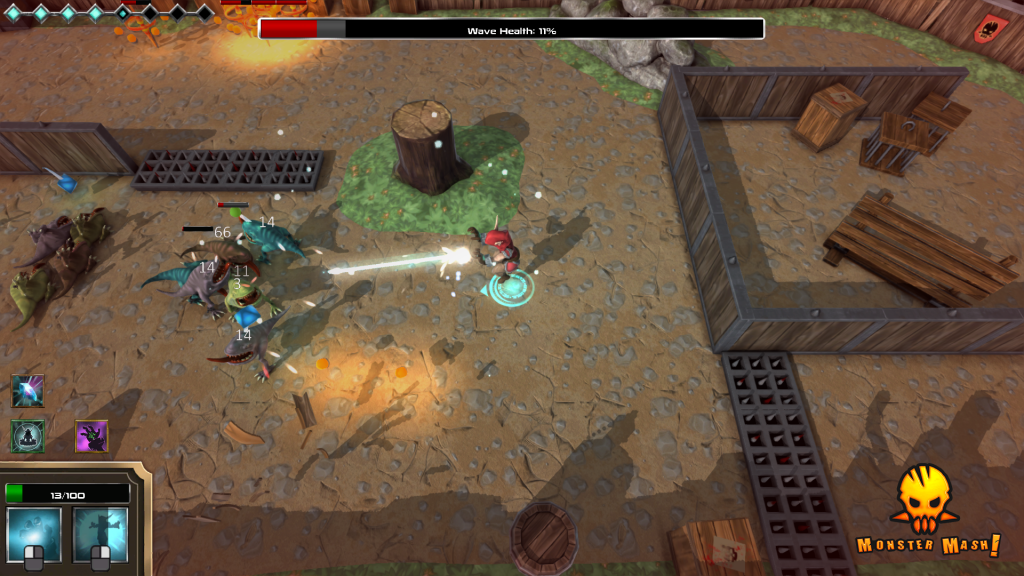
The right scope
This project is probably the project in which we had the best scope, out of all projects I've been a part of. We started off by scoping really low, but with a system that could easily be built upon. A few ways we could easily up our amount of content and game time; we could increase the amounts of waves in the arena, we could increase the length of each wave in the arena, and we could make more levels. In the end, we ended up making only one level each, instead making sure that they were very polished and that the waves were well thought through and interesting.
Keeping a simple concept interesting
One of our biggest challenges when it comes to our gameplay was that the loop itself was pretty repetitive. Originally, we had planned on introducing some more varying features like a third skill for the player. However, we decided to cut it in favor of polishing what we had, which definitely was the right decision. This required us to put some thought into the level design and progression of the level, specifically to keep the game interesting.
We managed it in two ways. The first is the design of the levels themselves. By placing obstacles and level hazards in the right way we could create pushes of enemies that would require the player to think about how they moved, making the decision making process more interesting. The second way is that we chose to incorporate two additional but pretty simple features that gave a lot of bang for the buck; breakable items and a scoring system.
The breakables ended up filling many needs we had for the levels; a non-dangerous level obstacle, an incentive for the player to explore the map to destroy the breakables, and adding more life to the level since enemies would start attacking breakables in their way. The score system served as a motivation for the player, as well as an extra reward since it felt really good to pick up the loot.
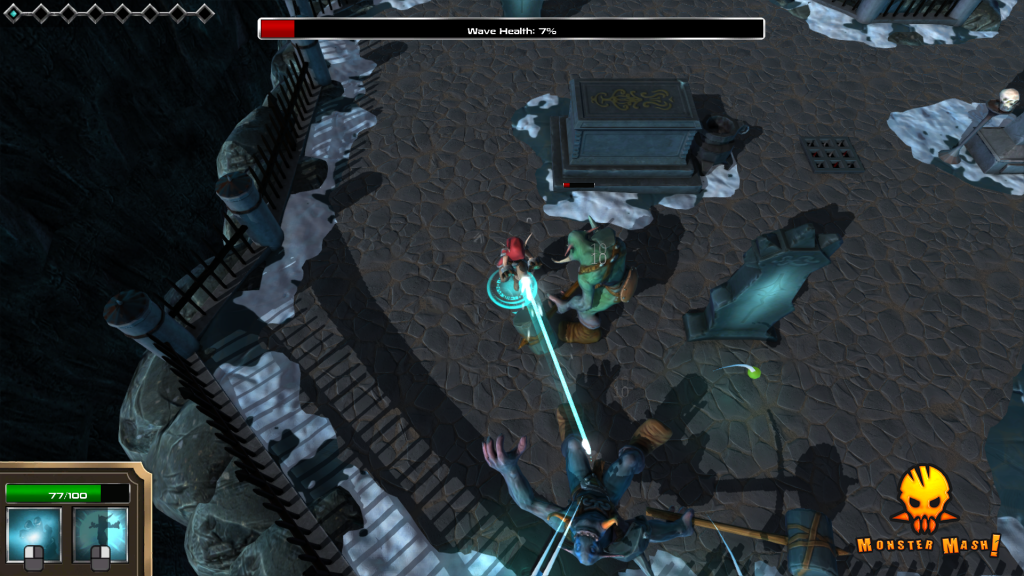
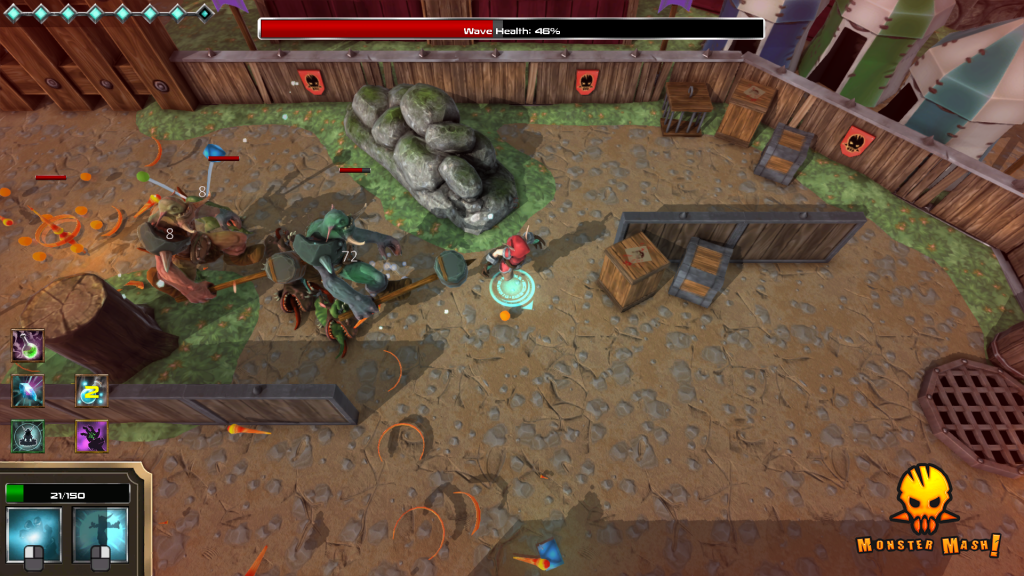
Conclusion
This is one of the best games I've been a part of making at The Game Assembly, with the best possible grade and voted the best project out of the advanced AI projects in our year. The biggest point of success for us in my opinion is that we kept our scope extremely low despite having the time to expand, instead spending our time and energy on polishing what we had. We also had a game that was always playable from start to finish, even in the early prototype stages, which was a lesson learned from our previous project and was a really great decision.

